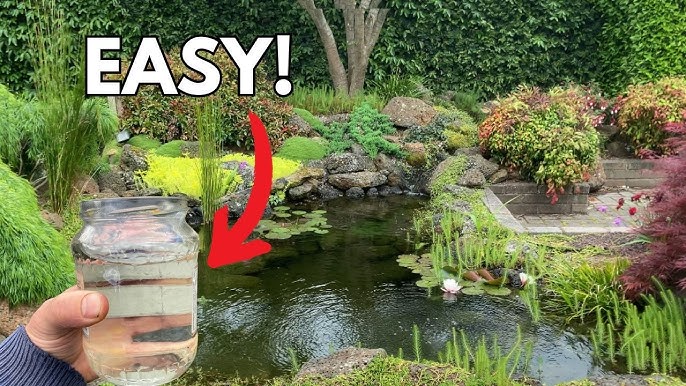Plants & Pets
TreeTake Network
As kids, we learnt that plants help clean the air. However, few know that plants also have a role in cleaning water. Aquatic plants also absorb carbon dioxide and expel oxygen. In aquatic environments, this is helpful to fish and improves water quality. Aquatic plants also absorb nutrients, bacteria, metals and chemicals.
Of late, plant-based water filtration has come under focus as a sustainable method for cleaning water without chemicals. In 2013, a researcher won an international award for his model of a plant filtration system that removed arsenic from water. Now that water filtration as a way of sustainability has been established, some recent studies have studied the role of different on remediation or the removal of dangerous substances.
Moss, which does not have a root system, absorbs water and nutrients. In 2017, Japanese researchers published a study which said Funaria hygrometrica, a certain type of moss, could absorb a large amount of lead due to a special kind of acid in its cell walls.
Later, a research group in Sweden conducted a similar study showing that an aquatic moss, called Warnstofia fluitans could help remove arsenic from water. It grows in Swedish wetlands contaminated with the toxic arsenic from nearby mining operations. The study found that due to the moss, the arsenic levels in the water dropped 80% in under an hour. Instead of being absorbed by the plant, the arsenic was bound to the plant’s tissue, making the water safer for humans and animals alike.
Another model used xylem in pine to filter bacteria from the water. Xylem is the porous sapwood that takes water from the roots of the tree up towards the leaves. The xylem acts as a natural filtration system for the tree. Using sections of pine branches that had been stripped of their bark, the researchers added a piece of plastic to the end of the branch. The dirty water flowed through the branch where the natural system removed bacteria and sediment from the water.
Which plants filter water?
Wetland plants can help remove heavy metals, bacteria, oil and other pollutants from water. Cattail, which grows between 5 to 10 feet tall, can remove zinc, cadmium, lead and nitrate from water. Water mint, or Mentha aquatica, grows up to 6 inches high with light purple flowers and should be first planted in a container before being moved to the water. It can help clean water by removing bacteria like E. coli and Salmonella. Soft rush or Juncus Effusus is a grasslike aquatic plant that grows up to 3 ½ feet high. As per a study, in addition to bacteria and oil, Soft Rush also removes heavy metals such as zinc, copper and cobalt from the water.
So, one can create a pond garden that filters water. Water lilies and Irise are two great pond plants that filter water. Water lilies have also proven especially effective in absorbing heavy metals from the water. They also provide shade for fish and help to reduce algae growth. Submerged plants that grow under the water are also very good at absorbing pollutants. They also oxygenate the water and keep fish healthy. Cabomba and hornwort are two good submerged species. This pond water can be a help in an emergency.
If one uses the right pond plants, they can improve the water quality by removing contaminants, absorbing nutrients, and oxygenating the water. They not only make the plant and the garden look more beautiful but are actually essential for the ecosystem and their maintenance easy. There are many different pond plants and some are better at filtering than others.
Little do we know that underneath the pond water, there is an entire ecosystem that, when balanced, efficiently breaks down the waste and debris that enter the water. Naturally occurring bacteria make the fish waste, leaves, and other debris that enter the water into nutrients that aquatic plants absorb, along with any carbon dioxide in the pond, and convert it into oxygen.
However, plants should be carefully selected and planted and invasive species should be shunned. There are some plants that quickly take over an area, hurting the native plants and animals that have to compete for resources. Also, aquatic plants must never be relocated into streams, lakes, or ponds.
So, what are the best aquatic plants for filtering pond water? Floating plants make a pond look like a fairytale scene. In addition to being decorative, they help absorb nutrients and block sunlight from entering the pond. Algae need sunlight to bloom, and floating plants stop the algae from getting the sun they need. Floating plants help keep the pond water cooler by adding shade. They also help hide fish and other pond life from predators.
The best floating plants include water hyacinth (considered invasive in many areas), water lettuce, duckweed, fairy moss and floating fern. Then there are some marginal plants that grow under the water but their leaves and flowers extend above the water. Passing water through the extensive root system of marginal plants absorbs the excess nutrients and nitrates that algae need to bloom. These can be planted on the edge of the pond. Such plants include water celery, water iris (except invasive varieties) pickerelweed, taro, canna lilies, lotus and watercress (which can be planted in moving water)
Submerged plants are also very good at oxygenating pond water and absorbing nutrients. These plants root at the bottom of the pond and live nearly entirely underwater. Unlike marginal or floating plants, submerged plants absorb nutrients through their leaves rather than their roots. Such plants include anacharis, hornwort and fanwort.
So, if you are planning a pond in your garden, select plants that will not only enhance the beauty of the water body but also help to keep the water clean.

















Leave a comment